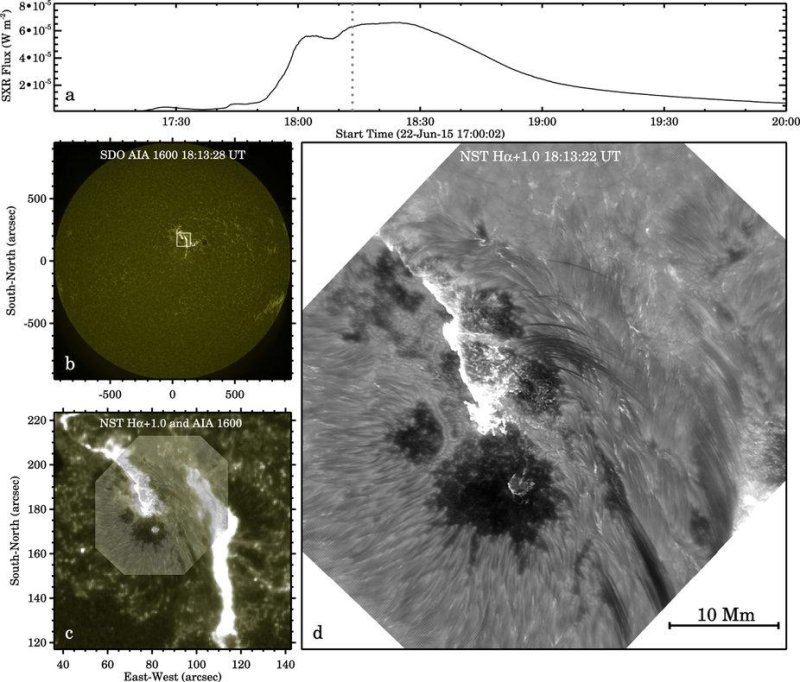1 of 2 | Researchers recently captured images of a solar flare and coronal rain in detail they say is "unprecedented" using Big Bear Solar Observatory in California. Photo by Ju Jing, et al./Scientific Reports
NEWARK, N.J., April 19 (UPI) -- New high-resolution imagery features the unfolding of a solar flare followed by a unique solar phenomenon known as "coronal rain."
The images were captured by Big Bear Solar Observatory in California's San Bernandino Mountains, which is managed by the New Jersey Institute of Technology.
Researchers at NJIT say the new pictures are unprecedented in their detail and offer new insights into the solar flare formation process. Scientists are keen to understand how energy is transferred from various parts of the sun's surface to other parts before, during and after a solar flare.
"We can now observe in very fine detail how energy is transported in solar flares, in this case from the corona where it has been stored to the lower chromosphere tens of thousands of miles below it, where most of the energy is finally converted into heat and radiated away," Ju Jing, a physicist and research professor at NJIT, said in a news release.
Ju is the lead author of a new paper on the discovery, published this week in the journal Scientific Reports.
Perhaps more exciting than solar flare imagery -- for the layperson, anyway -- is the documentation of coronal rain, which is what scientists call condensed droplets of cooling plasma that shower the sun's surface in the wake of a solar flare. The falling plasma droplets create colorful explosions as they hit the solar surface.
Researchers believe improving technology will continue to provide even more detailed imagery of solar flare activity. Ju and his colleagues are particularly interested in determining the role of magnetic flux tubes in trigger flares, as well as the dynamics that govern the bright ribbons featured in the initial phase of an unfolding solar flare.
By understanding the the various phases of a solar flare, researchers aim to improve their solar weather forecasting.
"Our measurements bridge the gap between models and observations, while also opening interesting avenues of future investigation," Ju said. "With large, ground-based telescopes, will we will be able to measure, for example, these features on the Sun's surface down to their fundamental spatial scale."















